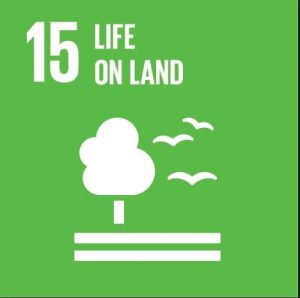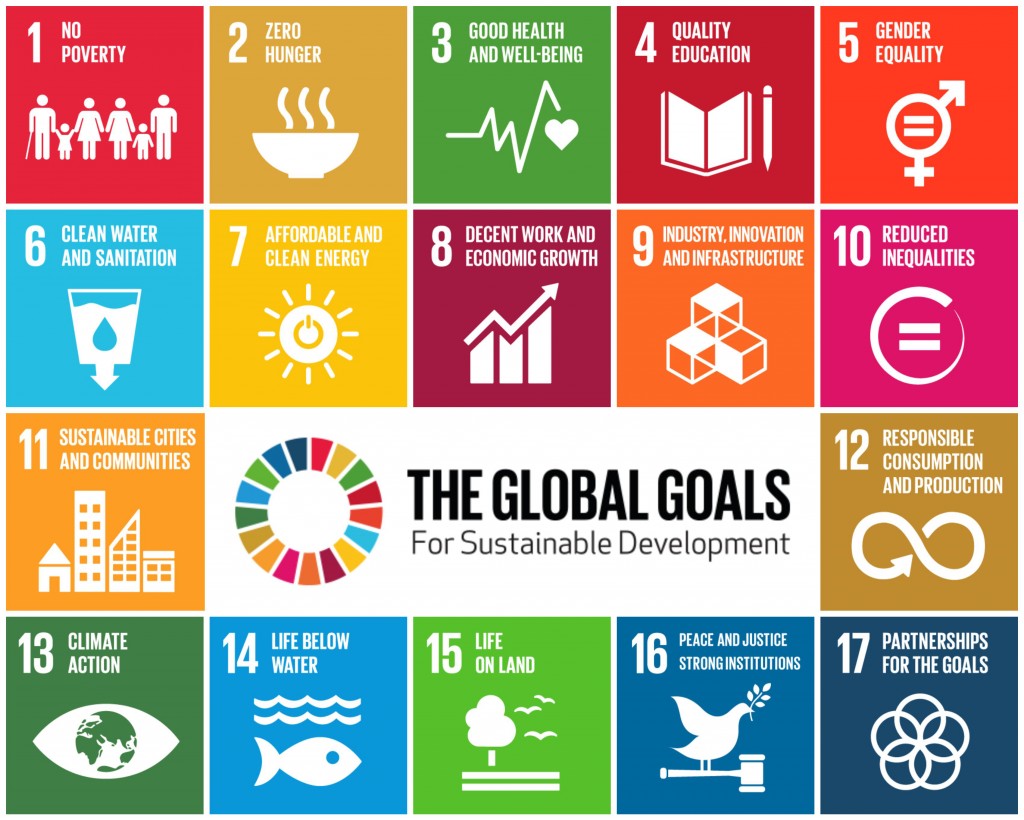Why The UN Sustainable Development Goals Really Are A Very Big Deal

25 September 2018 | When US President Donald Trump addresses the United Nations General Assembly today, try to look beyond the dog and pony show to see what’s happening at Global Goals Week, which started over the weekend and runs through Friday at events across New York.
Global Goals Week is designed to forge support around something called the Sustainable Development Goals (SDGs), which are designed to funnel investment money into sustainable growth across the developing world.
They formally came into existence in 2015, but they evolved from earlier development efforts, and the Bridgestone Group recently identified $42.4 billion in finance that had been aligned with the SDGs in the first 17 years of the century.
Just this week, The Rockefeller Foundation’s Impact Shares project launched an exchange-traded fund (ETF) called the Sustainable Development Goals Global Equity ETF (NYSE Arca: SDGA) in collaboration with the United Nations Capital Development Fund (UNCDF) as major commodity producers align their supply chains with the SDGs to reduce risk and increase reliability.
But what are the SDGs, and why is everybody talking about them?
For more on the SDGs, check out this 2016 episode of the Bionic Planet podcast – or, better yet, subscribe on iTunes, TuneIn, Stitcher, or wherever you listen to podcasts.
What are the SDGs?
Taken by themselves, the SDGs are easy to dismiss as mere words, but they don’t exist by themselves: they’re woven into the Paris Agreement and into the lending guidelines of development banks around the world. If Unilever CEO Paul Polman gets his way, they’ll become a sort of universal benchmark for sustainable investing around the world – Generally-Accepted Accounting Principles (GAAP) for the planet.
There are 17 of them, and they include things like ending poverty, ensuring good education, and building pipes, bridges, roads, and flood-plains that will work in a changing climate.

Basically, it’s stuff you can’t argue with – but how do you get there?
First, by breaking the broad goals down into specific targets, and the SDGs are broken down into 169 of those, and each of them has billions of dollars in financing attached to it. Second, by weaving them into existing frameworks to get buy-in across the planet. Third, but drawing in the private sector.
Goal 13, for example, is the one dealing with climate change, and it delineates five specific goals – from integrating climate change into national policies to helping people understand the science – but it also explicitly recognizes the UNFCCC as the primary vehicle for fixing this mess, and the UNFCCC has about a million financing mechanisms embedded in it.
“Probably 13 or 14 of the [SDGs] have climate change written into them,” said Polman. “If you look at the goals on forestry or oceans… or the one on fragile states…climate change permeates the whole [of the] Sustainable Development Goals.”
He’s on a crusade to win over the private sector one CEO at a time, but his success on that front will hinge on the uptake from investors, lenders, and consumers – groups that, he points out, stepped up big in Paris.
Forests as Focal Point
Sustainable Development Goal #15 aims to ramp up conservation and restoration of forests, farms, fields, and mountains by 2020, Daniel Duncan, the Prime Minister of Côte d’Ivoire, says his country aims to meet that goal by helping farmers boost productivity.
“We have to have agriculture that’s friendly with the environment,” he said in Davos, as he outlined the country’s five-year agricultural development program – a $4 billion initiative that aims to ratchet up production while reducing the amount of land used for farming and restoring forests. But for the plan to work, it will need to draw investments of more than $2 billion from the private sector, and he sees that money coming through a combination of carbon finance and long-term investment in sustainable agriculture.
Norwegian Prime Minister Erna Solberg, also speaking in Davos, drew a direct link between the SDGs and forests.
“If we don’t reach the SDGs, if we don’t manage this, then [limiting warming to 2°C] will not be possible,” She said. “Because then a lot of countries will look to cut down forests [instead of investing] in decarbonizing their economy, because it will mean losing jobs.”
The Peace Parallel
In a 2015 piece called “Why the Sustainable Development Goals Matter”, Colombia University economist Jeffrey Sachs pointed out that the Millennium Development Goals did help guide policy and practices that slashed extreme poverty, and he argued that clear goals like the SDGs have a long history of focusing massive numbers of minds on a common cause.
To bolster his case, he drew on a speech that John F Kennedy made 50 years ago to drum up support for the Limited Nuclear Test Ban Treaty (LTBT) with the United Kingdom and the Soviet Union.
“By defining our goal more clearly, by making it seem more manageable and less remote, we can help all people to see it, to draw hope from it and to move irresistibly towards it,” Kennedy said. “Our problems are man-made, therefore, they can be solved by man.”
He went on to dismiss the “absolute, infinite concept of universal peace and good will of which some fantasies and fanatics dream,” but implored us to keep it real.
“I do not deny the values of hopes and dreams, but we merely invite discouragement and incredulity by making that our only and immediate goal,” he said. “Let us focus instead on a more practical, more attainable peace – based not on a sudden revolution in human nature, but on a gradual evolution in human institutions – on a series of concrete actions and effective agreements which are in the interest of all concerned.”
To put these words into perspective, let’s remember when he delivered them: June, 1963 was just eight months after the United States went “toe-to-toe with the Ruskies” over the Cuban Missile Crisis. When the two countries, together with the UK, finally signed the treaty in August, it was one day shy of the 18th anniversary of the day the US dropped the bomb on Hiroshima. Three months later, Kennedy was dead.
Nuclear proliferation was the climate-change of its day, and it’s still out there, lurking in rogue nations like North Korea, but the threat of nuclear annihilation isn’t what it used to be.
“Though the LTBT certainly did not end the Cold War, it provided proof that negotiation and agreement were possible, and laid the groundwork for future pacts,” wrote Sachs.
The Complexity Conundrum
The Paris Agreement isn’t perfect, and it isn’t neat and tidy, like the Kyoto Protocol was – but that’s one reason the Kyoto Protocol failed.
The Paris Agreement is complex and often appears unnecessarily nebulous to people who are just now awakening to the climate challenge, and there is a dangerous trend among the mainstream media to dismiss it rather than try to understand it. The populist writer Naomi Klein, for example, has made the best-seller lists by dismissing the Paris Agreement as a “a pretty good definition of safety coupled with a concrete plan for disaster,” or “a step in the right direction, but a very small step.”
Such characterizations completely miss the point of the Paris Agreement and the SDGs, which aren’t “steps” at all but frameworks within which giant leaps can take place. The Paris Agreement, in particular, is more of a giant slide, decades in the making, that we can now glide down, and at speeds that are already sending shock waves through the fossil-fuel sector.
While the Kyoto Protocol provided sound-bite-sized objectives but no clear way of achieving them, the Paris Agreement provides a workable, upward-adjusting, all-encompassing bundle of thousands of individual agreements hammered out through decades of scientific research and political negotiation in conjunction with thousands of other agreements and national laws.
Klein eloquently advocates for some sort of “Leap”, which is great and necessary, but she and others need to stop trying to reinvent the wheel and instead focus on getting the wheels that already exist rolling.
Please see our Reprint Guidelines for details on republishing our articles.

